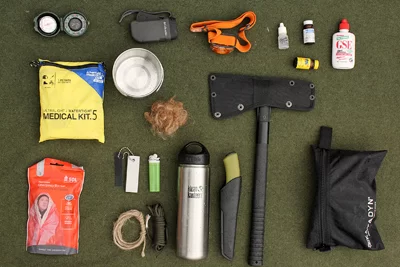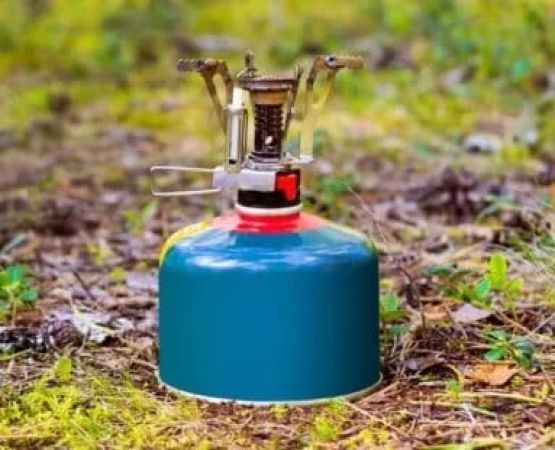Ultimate Guide to Recommended Camping Gear for Wilderness Survival
When you venture into the wilderness, being well-prepared is the key to not only surviving but thriving. As someone who's spent many nights under the stars, in remote locations where the elements were unpredictable, I can tell you that the gear you choose can make all the difference. In this guide, I'll walk you through the essential camping gear you need for wilderness survival, from tools that can save your life to practical items that make the journey more comfortable.
1. Shelter: Creating a Safe Haven in the Wilderness
One of the first challenges in any wilderness survival scenario is finding or creating shelter. You could be in the wild for a few hours or a few days, but without proper shelter, exposure to the elements could quickly turn into a dangerous situation.
My go-to shelter choice is a reliable tent. Not just any tent, but a high-quality, three-season tent that can withstand harsh weather. The key here is to look for something lightweight yet durable, with waterproof material. For example, I recommend brands like REI or Big Agnes. These tents offer protection from rain, wind, and cold temperatures, and their setup is simple enough that even in a downpour, you won’t struggle to get it up.
If you're looking for something even more lightweight, a tarp combined with a sleeping bag and some rope can be an effective minimalist shelter. But remember, when it comes to shelter, don’t skimp on quality, as it’s vital for your safety and comfort.
2. Fire: The Lifeline of Wilderness Survival
Fire is not just for cooking or warmth – it’s a survival tool. It can purify water, signal for help, and protect you from predators. However, starting a fire in a wilderness setting can be tricky, especially if you’re caught in the rain or wind. Trust me, I’ve faced that challenge more than once!
The best fire starter I’ve used is a magnesium fire starter. These things work even when wet, and they create a spark hot enough to ignite dry tinder. I recommend the Firesteel or the Solo Stove, which are both reliable and lightweight. Don’t forget to bring tinder, such as cotton balls soaked in petroleum jelly or dry leaves, to help get your fire going.
Alongside your fire starter, a windproof lighter can be incredibly useful when trying to get a fire started in tough conditions. Remember, always have multiple options for starting a fire in case one fails!
3. Water: Hydration is Key
In the wilderness, finding a clean water source isn’t always guaranteed. When you’re in the wild, water is life. Without it, your survival chances diminish drastically. That’s why I always bring a good water filtration system with me. There’s nothing worse than coming across a beautiful stream and realizing you have no way of purifying the water.
My favorite water filter is the LifeStraw Personal Water Filter. It’s lightweight, easy to use, and can filter out 99.9% of waterborne bacteria and parasites. Another great option is the MSR MiniWorks EX, which is a bit bulkier but provides more capacity for groups or extended trips. Don't forget to carry a reliable water container, like a durable Nalgene bottle or a collapsible water bag, which can help store your water once it’s been filtered.
4. Navigation: Never Lose Your Way
Getting lost in the wilderness is one of my greatest fears, and from experience, I can tell you that knowing your way around is crucial. While GPS devices are amazing, relying solely on technology can be a mistake, as batteries can die and signals can fail. That's why I always bring a compass and a map of the area I’ll be exploring.
For tech-savvy adventurers, the Garmin InReach Mini is a fantastic device. It combines satellite messaging, tracking, and navigation into one compact unit, and it can even send out an SOS signal in case of emergency. If you prefer traditional navigation, don’t underestimate the importance of a good quality compass. I’ve used the Silva Ranger, and it’s never let me down.
5. Food: Fuel for the Journey
When you’re out in the wild, the food you bring can be the difference between a successful trip and a grueling one. I’ve learned the hard way that carrying the right kinds of food can help you conserve energy and stay healthy.
Freeze-dried meals, like those from Mountain House or Backpacker’s Pantry, are my go-to choice. They’re lightweight, easy to prepare, and provide the necessary nutrition for the demanding conditions. I also recommend packing high-calorie snacks such as trail mix, energy bars, or beef jerky. These snacks can give you the energy you need when you're on the go and can’t stop for a meal.
6. Tools: The Essentials for Survival
A survival tool kit is essential when you're deep in the wilderness. From knives to multi-tools, the right tools can make tasks like building shelter, preparing food, or even self-defense easier and more effective.
The Leatherman Wave is a versatile multi-tool that I always have with me. It combines a variety of tools such as pliers, screwdrivers, knives, and even a bottle opener, all in one compact device. For cutting, I recommend a sturdy fixed-blade knife like the Morakniv Companion. It’s affordable, sharp, and can handle a wide range of tasks, from cutting branches to food preparation.
7. First Aid: Be Prepared for the Unexpected
Accidents can happen, even when you’re well-prepared. That’s why a first aid kit is essential. I’ve had to use mine on a number of occasions – from simple cuts and scrapes to more serious injuries. A comprehensive first aid kit should include bandages, antiseptic wipes, gauze, medical tape, pain relievers, and more.
Don’t forget to add a few wilderness-specific items like an aspirin for pain relief, blister pads, and a snake bite kit if you're heading into areas with venomous creatures.
8. Lighting: See and Be Seen
When you're in the wilderness, it can get dark quickly. Having a reliable light source is crucial, not only for finding your way around camp but also for signaling if you need help. My choice of lighting is the Black Diamond Spot 325 Headlamp. It’s lightweight, bright, and waterproof, making it perfect for navigating through the wilderness at night.
Having a flashlight and extra batteries is also wise. I’ve had nights where my headlamp ran out of power, and I was thankful I had a backup source of light in my pack.
9. Clothing: Comfort and Protection
Wearing the right clothing can be the difference between comfort and misery in the wilderness. I always dress in layers. Start with a moisture-wicking base layer to keep sweat off your skin, add an insulating layer for warmth, and top it off with a waterproof, windproof outer layer.
Some of my go-to brands for wilderness clothing are Patagonia and Columbia, which offer durable and reliable clothing for harsh conditions. Remember, quality socks and boots are just as important for comfort and protection. Don’t underestimate the power of a good pair of waterproof boots that provide ankle support!
Whether you're heading into the wilderness for a weekend getaway or a longer survival trip, the gear you bring with you can make a huge difference. Having the right equipment not only increases your chances of survival but also allows you to enjoy the experience fully. Every piece of gear I’ve recommended here has been tested and used in real wilderness conditions. So, take the time to choose wisely, pack your gear carefully, and most importantly, get out there and experience the wild in all its glory.
For the best camping locations and tips, be sure to check out Pine Cliff Resort, where you can find the ideal place for your next outdoor adventure.







